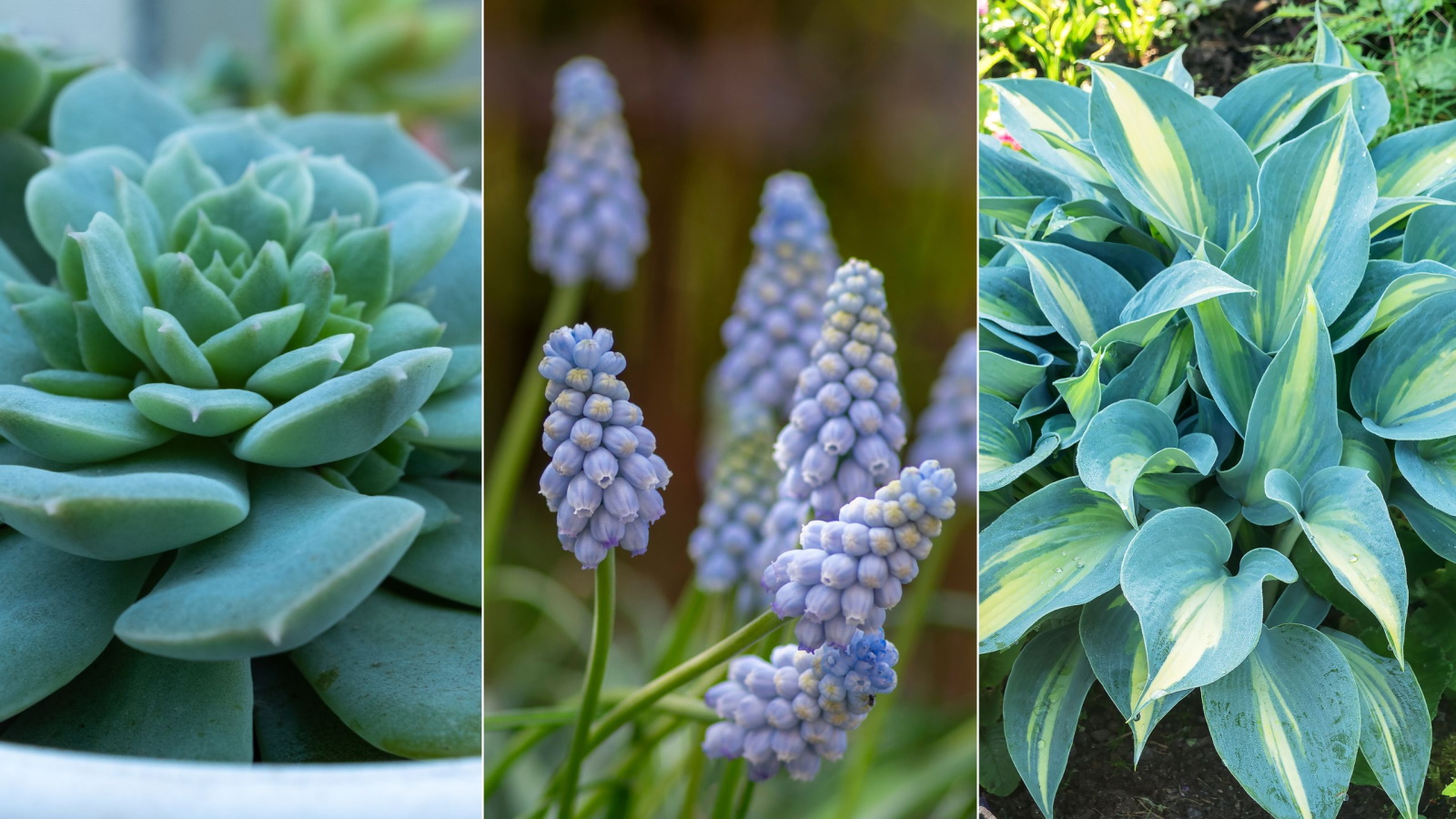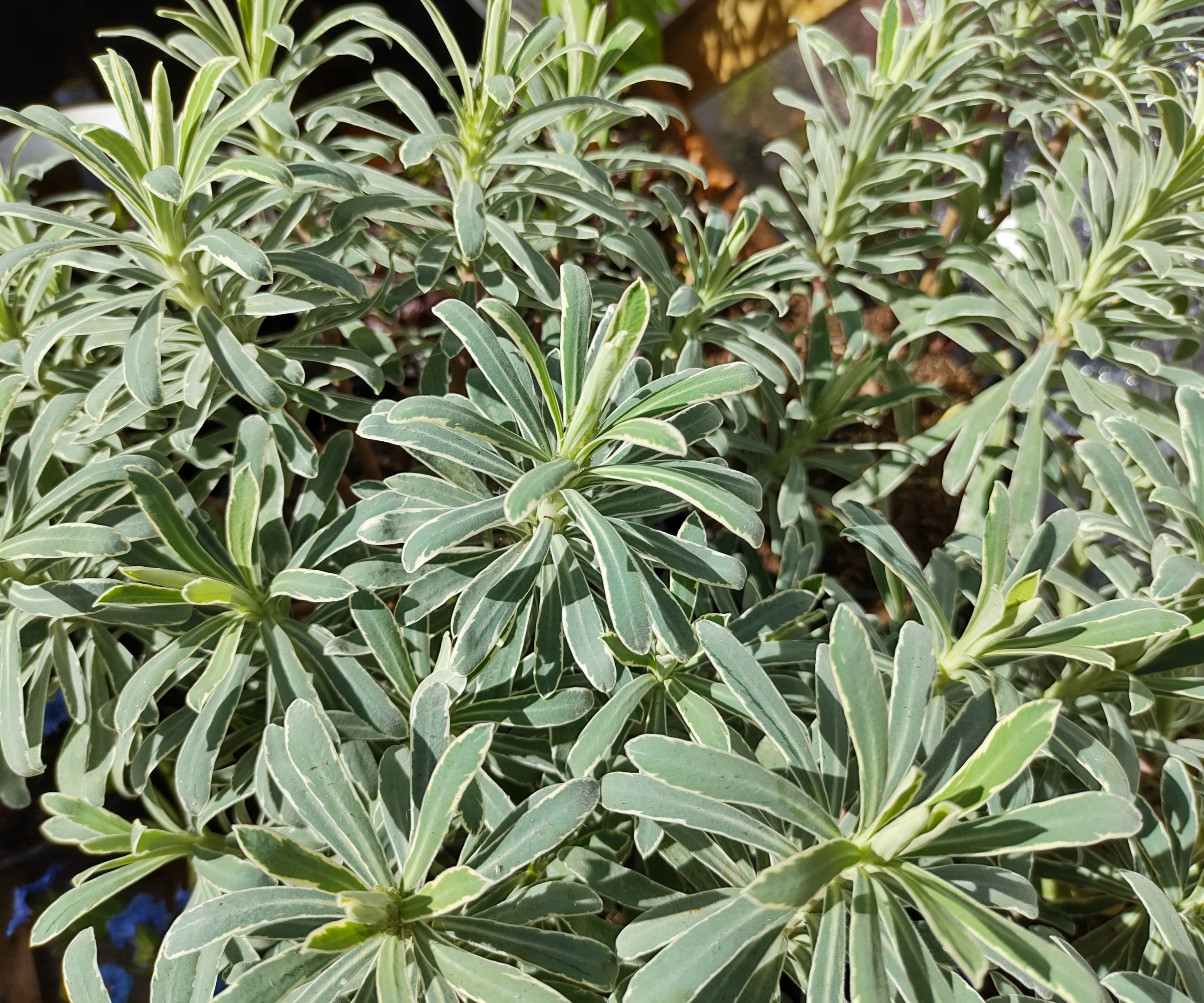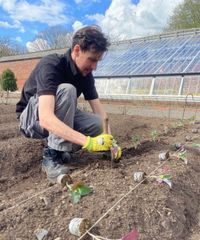Teal is tipped to be the color of the year in the garden for 2025 – here are 8 of the best teal plants you can grow to get the look
Give your backyard a whimsical feel with these unique indoor and outdoor plants that evoke serenity


Blue is often a rare hue to find in nature, with few florals boasting this primary color. Nevertheless, it's expected that more gardeners will opt for blue-green plants, as the Garden Media Group has named teal its color of the year for 2025.
Just as blue houseplants are proven to bring a feel of safety and abundance to your home, blue flowers are often thought to have a calming effect. The Garden Media Group 2025 Garden Trends Report says: 'With a bold, synthetic quality, [teal] bridges the realms of fantasy and reality, evoking the serene blues of Caribbean waters, the expansive freedom of vast skies, and the immersive depth of virtual spaces.'
Only a handful of plants might come to mind when you think of the color teal, but the trends report notes there are choices from grasses to foliage and even flowering plants. Here, we've compiled our top picks of teal plants to help you get the look in your yard for 2025.

8 of the best teal plants
As well as teal being considered a calming color that can be used in memory gardens and in garden design to improve mental health, the GMG report nudges at the nostalgic feel it evokes: 'This trend revisits the 'Frutiger Aero' aesthetic, known for its teal and green hues and glossy textures, which dominated the tech scene from 2000 to 2013.
'This aesthetic envisioned the future as bright and colorful, which starkly contrasts the grey and metallic futurism that followed. It’s a celebration of color that rejects the minimalism of recent years, bringing joy and vibrancy back into design.'
Keen to achieve this uplifting feel in your yard? Try growing some of our favorite teal plants from the list below.
1. Grape hyacinth 'Valerie Finnis'

If you hope to bring this color trend into your fragrant garden, then the 'Valerie Finnis' is the obvious choice. With so many hyacinth varieties to choose from, this blue plant is a charming option for growing hyacinth bulbs in containers.
Design expertise in your inbox – from inspiring decorating ideas and beautiful celebrity homes to practical gardening advice and shopping round-ups.
'Opening in pale blue-green shades, this grape hyacinth looks effective when planted on mass in one, two or several pots,' says Thomas Rutter, former professional gardener and content editor at Homes & Gardens.
'This bulb tends to flower in the spring, usually around May. If you choose to plant them in the border, opt for a front position, as they will only grow to six or seven inches tall,' he adds.
Native to southeastern Europe, grape hyacinths tend to be hardy across US hardiness zone three to zone nine. Thomas also notes that grape hyacinths are a an effective deer-resistant spring bulbs.
Shop for 'Valerie Finnis' bulbs from Walmart.

Thom is a Content Editor within the Gardens Team at Homes and Gardens. He has been working as a gardener and garden writer for several years. Whilst completing his Horticultural Traineeship at the Garden Museum, London, he was able to gain experience at many of the UK's world-famous gardens, including Sissinghurst, Lowther Castle, and Iford Manor. Following this, he worked for two private estates in Tuscany, Italy.
2. Festuca 'Beyond Blue'

Growing ornamental grasses in your yard is a great way to add some interesting texture to your landscape. With festuca 'Beyond Blue' you get texture and unique color in one.
Recommended in the GMG Garden Trends Report 2025, this grass is semi-evergreen and boasts a powder-blue color. As a mound-forming grass, you can use it in borders, earthy-tone containers or even alongside a pea gravel path.
'Whether applied sparingly or used as a bold statement piece, this color complements a modern palette that includes shades of blue, green, brown, orange, and gold, making it a versatile choice for any setting,' the report says.
It's native to Europe and can be grown across US hardiness zone five to zone 10. Incorporate it in your drought-tolerant planting scheme, as this plant is happy in a sunny spot with minimal watering.
You can find blue festuca at Amazon.
3. Echeveria 'Blue Star'

A choice for the houseplant lovers and those living in milder climates, echeveria is one of the most popular types of succulents. The 'Blue Star' variety is particularly captivating with its rosettes of a cooler shade.
It's a fast-growing succulent that can grow up to six to eight inches in a year. Native to central and southern America, these succulents can grow outdoors across US hardiness zone nine to zone 12.
Succulent care is pretty straightforward, so long as you can provide your echeveria with a sufficient amount of light.
'Echeveria are succulents and need high light to thrive,' notes Lisa Eldred Steinkopf from the Houseplant Guru. Lisa advises taking particular care when using homemade bug sprays on these plants, to protect the succulent's cutin. 'Cutin is like a waxy covering and helps protect the plant from water loss and protects it from sunburn,' she adds.
This Caribbean Blue Echeveria from Walmart is another beautiful option for bringing teal plants into your home.

Lisa is a houseplant expert who runs her blog The Houseplant Guru with over a decade of professional experience at Steinkopf Nursery and Garden Center in Michigan. As a child, Lisa helped her grandma tend to African violets and other houseplants. Since then, Lisa has forged a career providing houseplant advice, holding lectures and writing for publications across the US.
4. Brunnera 'Jack Frost'

Another teal plant noted on the GMG 2025 Garden Trends Report is the beautiful 'Jack Frost' variety of brunnera. It's possible to grow brunnera as a houseplant with heart-shaped leaves, as well as outdoors in pots.
It's native to woodland areas of eastern Europe and western Asia, doing well as a ground cover plant for shade beneath canopies of trees and growing best across US hardiness zone three to zone eight.
When growing in sufficient light, this brunnera will bloom with sprays of blue flowers. It can also be divided for propagation and generally doesn't require pruning.
You can buy brunnera 'Jack Frost' from Amazon.
5. Euphorbia 'Glacier Blue'

Euphorbias are versatile plants that come in a wide range of varieties, perfect for different uses in the yard. For a teal choice with full foliage, 'Glacier Blue' is the perfect choice.
Bred in the US, this plant is a variegated form of Euphorbia characias, a Mediterranean plant. It's hardy to US hardiness zone seven to zone 10 and is perfect for using in borders or containers.
'An evergreen perennial, ‘Glacier Blue’ impresses year-round with its gorgeous foliage and also produces pale white flowers in spring and summer, which feature distinctive green eyes,' says Drew Swainston, former professional gardener and gardens content editor at Homes & Gardens.
'Plant ‘Glacier Blue’ in a sunny spot with fertile and well-draining soil - it can tolerate some shade, but not too much,' he adds.
Euphorbias have a milky sap that can be irritable to skin, so make sure to wear gardening gloves and long sleeves when pruning this plant - these gardening gloves with long sleeves from Amazon do a good job at protecting your skin

Drew qualified as a journalist and wrote for many websites and publications, before studying for a horticulture qualification. He worked as a professional gardener for several years, specializing in kitchen gardening. He's now bringing his expertise and passion to Homes & Gardens as a member of our team.
6. Hosta 'Touch of Class'

Hostas are loved for their showy foliage and the variegated yellow and teal leaves of 'Touch of Class' make a spectacular sight in any yard. Grow hostas in borders or grow hostas in pots - they can be used in many different ways.
'Hostas need to be in a shady place with plenty of moisture,' notes Lisa. They are loved for being shade plants because they add greenery to the most difficult spots out of sunlight. Make sure you don't grow it in a spot where it doesn't get any sunlight, however, as this could affect its variegation.
The 'Touch of Class' variety is native to damp woodland areas of Asia. In the US, it can be grown in zone three to zone five. You can even divide hosta to grow more of these dazzling plants in your yard.
'Touch of Class' hosta is available at Nature Hills.
7. Blue Star Fern

Whether you love to grow ferns outdoors or prefer indoor ferns, consider adding blue star fern to your collection. This interesting fern has blue-green fronds of a unique structure.
'It is super dramatic, and has such an interesting shape - it also works as a cut foliage stem and lasts a long time in floral arrangements,' says Rachel Bull, Head of Gardens at Homes & Gardens.
These ferns are native to tropical and subtropical areas of the Americas, so will do well in a humid spot as a bathroom plant. Outdoors, grow this fern in zone eight to zone 13 in a bright spot, out of direct sunlight.
Interestingly, just like staghorn ferns, blue star ferns are epiphytic and grow on tree trunks rather than in soil in their native environment.
Shop for an eye-catching blue star fern at Walmart.

Rachel is a gardening editor, flower grower and floral designer. Her journalism career began on Country Living magazine, sparking a love of container gardening and wild planting. After more than a decade writing for and editing a range of consumer, business and special interest titles, Rachel became editor of floral art magazine The Flower Arranger. She then trained and worked as a floral designer and stylist in London for six years, before joining the Homes & Gardens team.
8. Eucalyptus

Among the best fast-growing trees is eucalyptus, a favorite for its elegant, silver-green foliage. Not only can you use eucalyptus to keep insects out of the house and use eucalyptus in the shower, but growing eucalyptus in your yard is also incredibly rewarding.
These fragrant plants come in a wide range of varieties with beautifully colored bark, as well as teal foliage. 'You do need to prune eucalyptus to keep it in shape and maintain its size,' notes Rachel. 'I've grown a lot of eucalyptus in my backyard, and I love it for its scent and how classically stylish a few cut branches can look when brought into my home.'
Eucalyptus is native to Australia where it enjoys plenty of direct sunlight in its natural habitat. They grow well across US hardiness zone eight to zone 11 and, depending on the variety, can be contained to pots or planted to provide some canopy in your yard.
FAQs
Why is my teal plant losing its color?
There are a few things that may cause a plant to lose its color. This includes too much or too little exposure to light, dehydration and a nutrient deficiency. Each plant has differing needs, so the best thing to do its research optimal care requirements for your plants and make adjustments accordingly to prevent more foliage fading.
Other teal plants noted in the GMG 2025 Garden Trends Report include Allium ceasium 'Zamin' and blue chalk stick succulents. The report also recommends pairing teal plants with patina pots and copper decorative features. Styling your houseplants of bluer hues with brass-toned containers can enhance the calm and warm feeling the plants bring to your interiors.

Tenielle is a Gardens Content Editor at Homes & Gardens. She holds a qualification in MA Magazine Journalism and has over six years of journalistic experience. Before coming to Homes & Gardens, Tenielle was in the editorial department at the Royal Horticultural Society and worked on The Garden magazine. As our in-house houseplant expert, Tenielle writes on a range of solutions to houseplant problems, as well as other 'how to' guides, inspiring garden projects, and the latest gardening news. When she isn't writing, Tenielle can be found propagating her ever-growing collection of indoor plants, helping others overcome common houseplant pests and diseases, volunteering at a local gardening club, and attending gardening workshops, like a composting masterclass.